I tried two different electric motors with one adapter. Both are 12 V but the current and power ratings are different, and one motor takes all the current. What should I do? Can you come up with a simple diagram?
-
It sounds like you're connecting the motors in series. Try connecting them in parallel instead. – DoxyLover May 15 '22 at 04:42
-
Are you trying to drive them both from the same power source? What are your goals? Do you need them to be synchronized? Might be a reason not to (main rotor vs tail rotor; front vs rear wheels on an AWD drag racer; etc. – Harper - Reinstate Monica May 15 '22 at 05:06
-
The motors are different. Define the real problem with expectations and results and details. – Tony Stewart EE75 May 15 '22 at 05:17
2 Answers
As you said:
Both (motors) are 12 V but the current and power ratings are different, and one motor takes all the current.
Your statement is not very clear, as it makes us conjecture the missing information, as measured current values in M1 and M2, Power Supply details, etc.:
- It can signify that you are measuring the current in the 2 motors properly connected in parallel, and current in M1, i(M1) >> i(M2), while motors are running abnormally - otherwise you would not be asking here.
- It can misleading be interpreted that M1 and M2 are in fact connected in series.
- We can assume something is happening also with your Power Supply when interacting with the loads.
For instance: If M1 and M2 are actually connected in series, the big motor may have a higher friction and lower resistance, so most of the 12V differential occurs in the smaller motor. This smaller motor then starts spinning and reaches high speed in very short time (t < 1s); and the faster it goes, the less current it drains.
Possible Outcome: The bigger motor does not receive enough current to overcome the internal frictions and start its rotation. So, just the smaller motor runs.
Potential solutions:
If motors M1 and M2 were mistaken connected in series:
- Connect M1 and M2 in parallel: +M1 = +M2 = +Supply and -M1 = -M2 = -Supply.
- Problem solved!
If motors M1 and M2 are really connected in parallel:
- Check if each motor can run alone using in the same power supply (PS = “adapter”).
- If both M1 and M2 run ok, then connect them in parallel = see above. If both run ok, problem solved!
- If either M1 or M2 run OK separately with your PS, but do not run with M1+M2 (together), it probably means that the overload protection of your PS has been triggered, lowering the output voltage, while still providing some current.
One such protection is called Foldback current protection “as answered here”, but can be others (see linked examples in the corresponding question).
About:
What should I do?
Here is what I suggest to be done - do this for M1 and M2, separately:
- Double-check that M1 & M2 are really in parallel.
- Measure the free-running current (motor with No Load) and voltage: i@NoLoad and V@NoLoad.
- Repeat for a heavy-load current (motor shaft with heavier load than expected in your application). i@Heavy and V@Heavy, remember each motor.
- If possible, measure the stall current: if torques and currents are not very high, try to stop the rotation of the motor. Hold the shaft rotation with a rubber or plastic piece with pliers, while measuring the current. i@Stall and V@Stall
- Checking torque smoothness (in the plier) - or not shows how the overcurrent protection works:
(a) PS is strong enough and does not trip the protection, enabling to measure the current during stall torque. Voltages (NoLoad, Heavy and Stall) here should be nominal = 12V. The least likely in your case.
(b) PS has triggered a constant current protection between Heavy-torque and Stall-torque tests. Measuring the voltage, V@NoLoad = 12V, but V@Heavy or V@Stall may be lower than 12V, while StallTorque >= HeavyTorque - this is an important “detail”.
(c) PS has triggered a Foldback current protection on Heavy-torque, or more probably on Stall-torque test. In this case, voltages, currents and torques are reduced from the expected values. As torque is proportional to current, on Foldback the i@Stall < i@Heavy. Very likely scenario for you.
(d) PS has a cyclical auto-restart feature like a hiccup overcurrent protection. In this case, torque is not smooth, but cycling frequency to restart varies from model to model. I have sen models trying to restart every 100ms (as some laptop PS) to 5s (on LCD TV). If you don’t have and oscilloscope, maybe a LED+Resistor could show this fast restarting cycles too. Voltage and current measurements using a digital multimeter are almost worthless when this hiccup protection triggers. - Depending of the separate values and if both motor M1 and M2 run ok at least under Heavy-Torque condition, you can connect them both in parallel as M1+M2 and your project would run ok with you PS.
- During startup of any motor, until it reaches nominal speed, the current will be close to the Stall-torque.
Maybe your PS is in the borderline to trip the current protection in such situation with 2 motors. - Starting the motors in sequence - not at the same instant helps: the larger (current) motor first should be allowed to accelerate with your PS, possibly not tripping the protection.
Then, after 1~5s you start the second motor. - As a last resource, upgrade your PS.
Power supplies for Motor-based devices should not be of Foldback type, unless heavily oversized.
A current limit protection works better for motors, but should have a thermal cutoff switch, especially if they operate near the V-I limit knee.
- 1,412
- 4
- 22
